NYC’s Forgotten ‘War on Christmas Trees’
Discover how an obscure holiday crackdown affects festive street vendors today!


If you’ve ever jogged or strolled around Gramercy Park, you’ve probably peeked through its fence, and stared longingly at the green foliage inside. Located in the Gramercy Park Historic District, the 2-acre private green space is fenced-in all around, and only those with keys are granted access inside. As one of only private parks in New York City (and one of three in the state), it’s shrouded in mystery, leaving many New Yorkers intrigued.
Although Gramercy Park is covered in trees now, it actually sits in the middle of what used to be a swamp. In 1831, real estate developer Samuel B. Ruggles purchased the property from James Chatham Duane (the son of the former mayor, James Duane) with the intention of transforming it into an open green space. Because it was so full of puddles, he spent $180,000 draining the marsh and landscaping the grounds, which was known as Gramercy Farm at the time. Ruggles, who was also instrumental in constructing Union Square, played an important role in laying out the housing that surrounds the park.
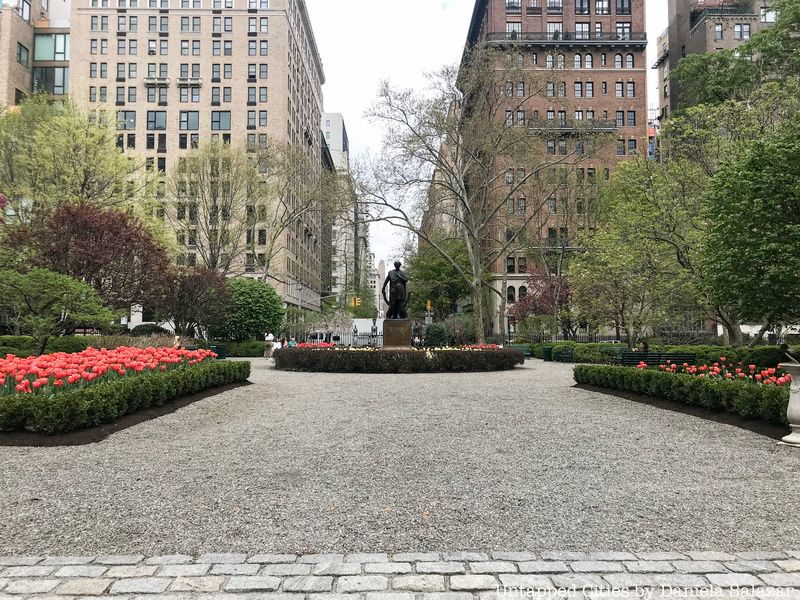
To enter Gramercy Park, you’ll need a numbered and coded key. Roughly 400 are in circulation, but as The New York Times points out, they are very hard, if not impossible, to copy. Even if you do manage to nab a key, the locks change every year, so your best bet is to make friends with a nearby resident who lives in one of the 39 select buildings surrounding the park. These buildings pay a yearly fee to maintain the grounds, and two keys, managed by doormen, are allocated to each; they must be signed out by residents, but key holders can invite up to five guests in the park at a time.
Your other option is to rent a room at the Gramercy Park Hotel, which offers keys to its guests. Just keep in mind it’ll cost you a hefty sum ($400 per night), and you’ll be out $1,000 if you need to replace a key.
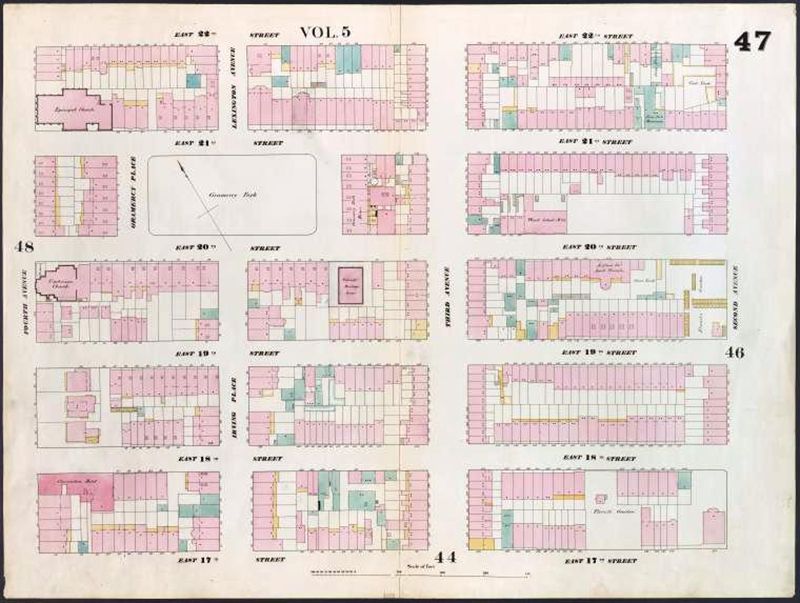
An 1853 estate map of the area surrounding Gramercy Park. Image from New York Public Library Digital Gallery
Towards the end of the nineteenth century, a cable car was proposed to connect Irving Place to Lexington Avenue by cutting through Gramercy Park. The bill passed the New York State Legislature, but was eventually vetoed by Governor David B. Hill. In 1912, a similar proposal surfaced – this time, a road was suggested to bisect the park. However, due to protests from the Gramercy Park Association, the idea was eventually nixed.
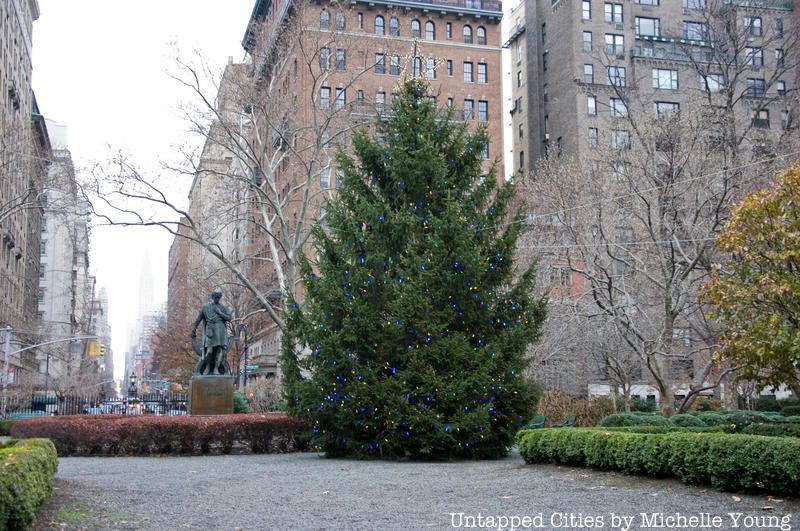
Once upon a time, Gramercy Park was open to the public on Gramercy Day, which usually fell on the first Saturday in May. In 2007, however, the trustees of the site stopped opening its gates because the event turned into “a street fair.” Today, the private space is only accessible to the public on Christmas Eve; a Christmas tree will be erected there during the holiday season.
Although we might not have keys to Gramercy Park, it’s still virtually accessible thanks to Shawn Christoper, a computer programmer who took 360-degree panoramic pictures of its interior using Photo Sphere, a Google app. He was able to enter the park with a key that came with his rented Airbnb room. At the time, Christopher was unaware that guests had to be accompanied by key holders during visits, and that commercial photography is generally forbidden once inside. Direct link to Google Maps image here.
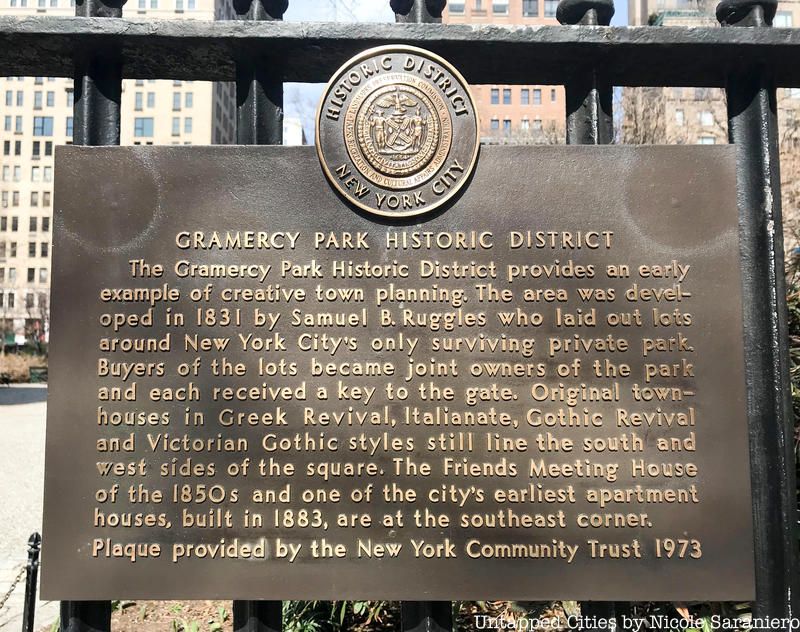
The Gramercy Park neighborhood was recognized as a historic district in 1966, and the properties surrounding the park on its east, west and south sides were also designated as landmarks. While newer apartments can be found scattered among older buildings, most of the townhouses were constructed in the mid-19th century (between 1844 and 1850) in the Italianate, Greek Revival and Gothic Revival styles; some also feature decorate wrought-iron fences.
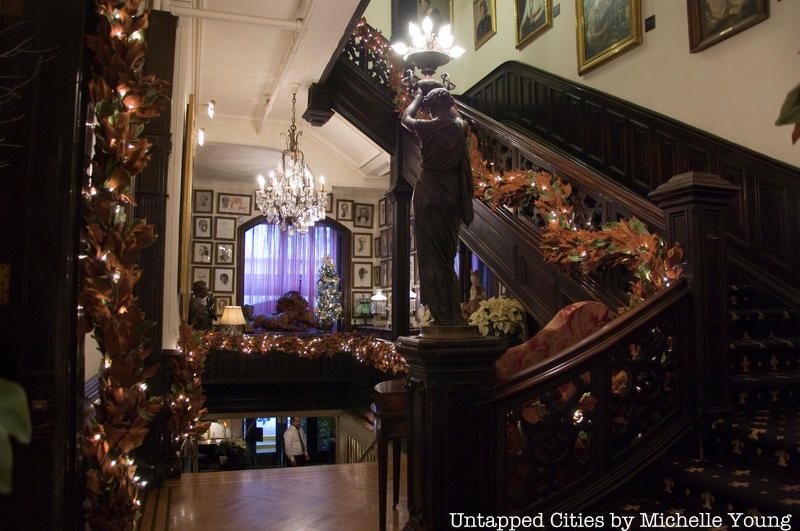
Inside the National Arts Club
Gramercy Park’s exclusive nature has caused some problems over the years. Perhaps the most notable event occurred in 2001, when O. Aldon James, the president of the National Arts Club at the time, brought a group of minority students from Washington Irving High School into the park. Unfortunately, they did not get to stay long, as one trustee reported them to the police for trespassing. The students and the club consequently filed a lawsuit, which claimed that the trustee had stated that the park “is not for these types of kids.”
The case was later settled with each student receiving $36,000 from the park; one boy, who was specifically confronted came away with $50,000.
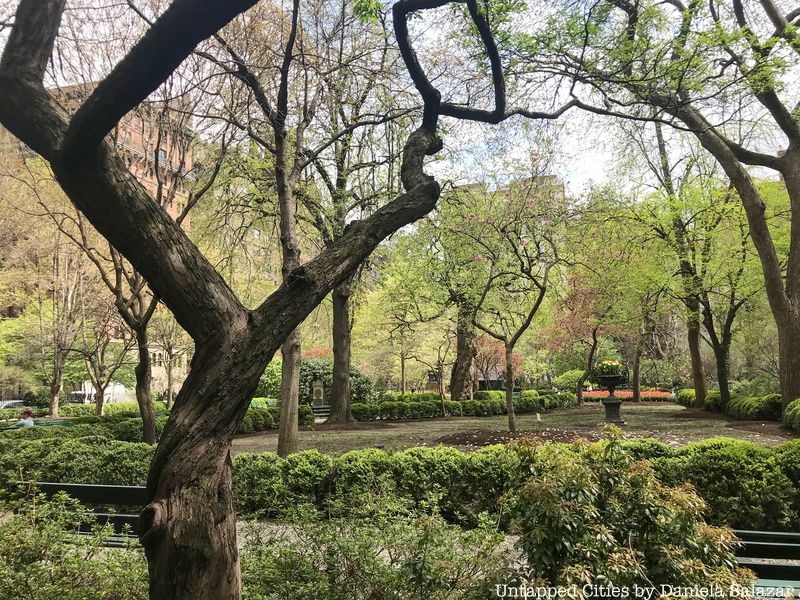
In 1832, Samuel Ruggles received the green light from the city to create two new streets on the sides of Gramercy Park. The first street, Irving Place, was named after a renowned American writer, Washington Irving. It officially opened in 1831 at 20th Street, stretching down all the way to 14th. Lexington Avenue, which runs from East 20th Street to East 131st Street, debuted a few years later in 1836, only to become one of the most well-known streets in the city.

The statue of Edwin Booth, erected in 1918, is one of the most notable features of Gramercy Park. The Shakespearean actor, who is seen depicted as Hamlet, was one of the most celebrated actors during the 19th century. His achievements, however, were overshadowed by his brother John Wilkes Booth, who assassinated President Abraham Lincoln in 1865. Decades following the incident, Edwin Booth founded the Players Club, on Gramercy Park South, as a place for actors and other creatives to congregate. Every year, on November 13th (Booth’s birthday), members of the club place a wreath on the statue.
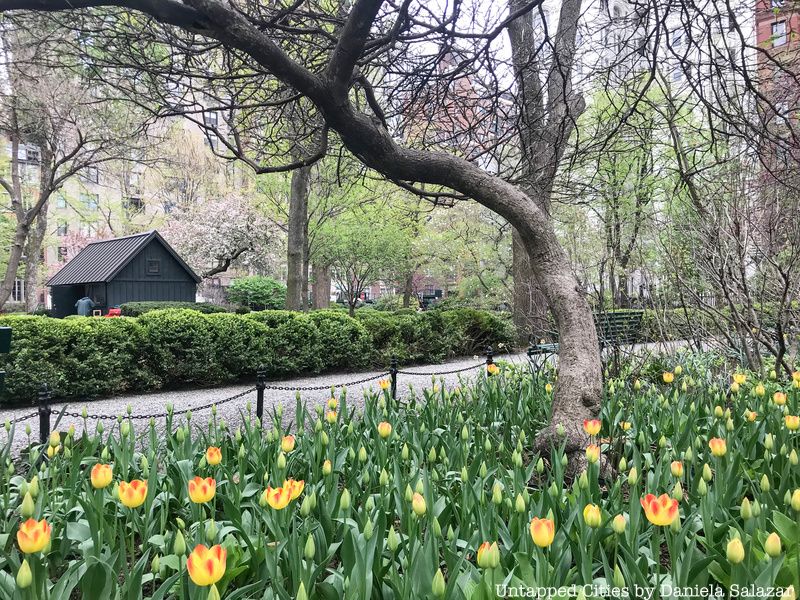
In 2004, the rules of Gramercy Park were amended for the first time since 1905, bumping up the regulation count from 15 to 22. Some of the stricter rules include no beach attire and no ball playing. Jogging is also limited to “graveled areas or other areas designated by the Trustees.” (See more rules here.) According to Arlene Harrison, the president of the Gramercy Park Block Association, the green space is meant to serve as an ornamental park, reserved for quiet relaxation and meditation. The gate, she argues, is there to protect the plants – not to keep people out as some disgruntled New Yorkers like to believe.
Next, peek inside The Players Club: Gramercy’s Members-Only Theater Club and See Inside the Private Gramercy Park.
Subscribe to our newsletter